Friends of the Blue Hills received a stewardship grant from REI Co-op to fund the initial clearing of invasive plants and a new interpretive panel to commemorate the hard work and contributions of the Civilian Conservation Corps.

History of the Civilian Conservation Corps
by Maggi Brown, DCR Blue Hills Reservation Visitor Services Supervisor
In 1933, America was in the grip of a Great Depression when Franklin Delano Roosevelt was inaugurated on March 4. More than 25% of the population were unemployed, hungry and with little hope. President FDR acted quickly. Within a month of his inauguration, the Emergency Conservation Work Act was signed creating a federal work relief program to be “used for simple work, not interfering with normal employment, and confining itself to forestry, the prevention of soil erosion, flood control, and similar projects.” So, began one of the single greatest conservation programs in the country.
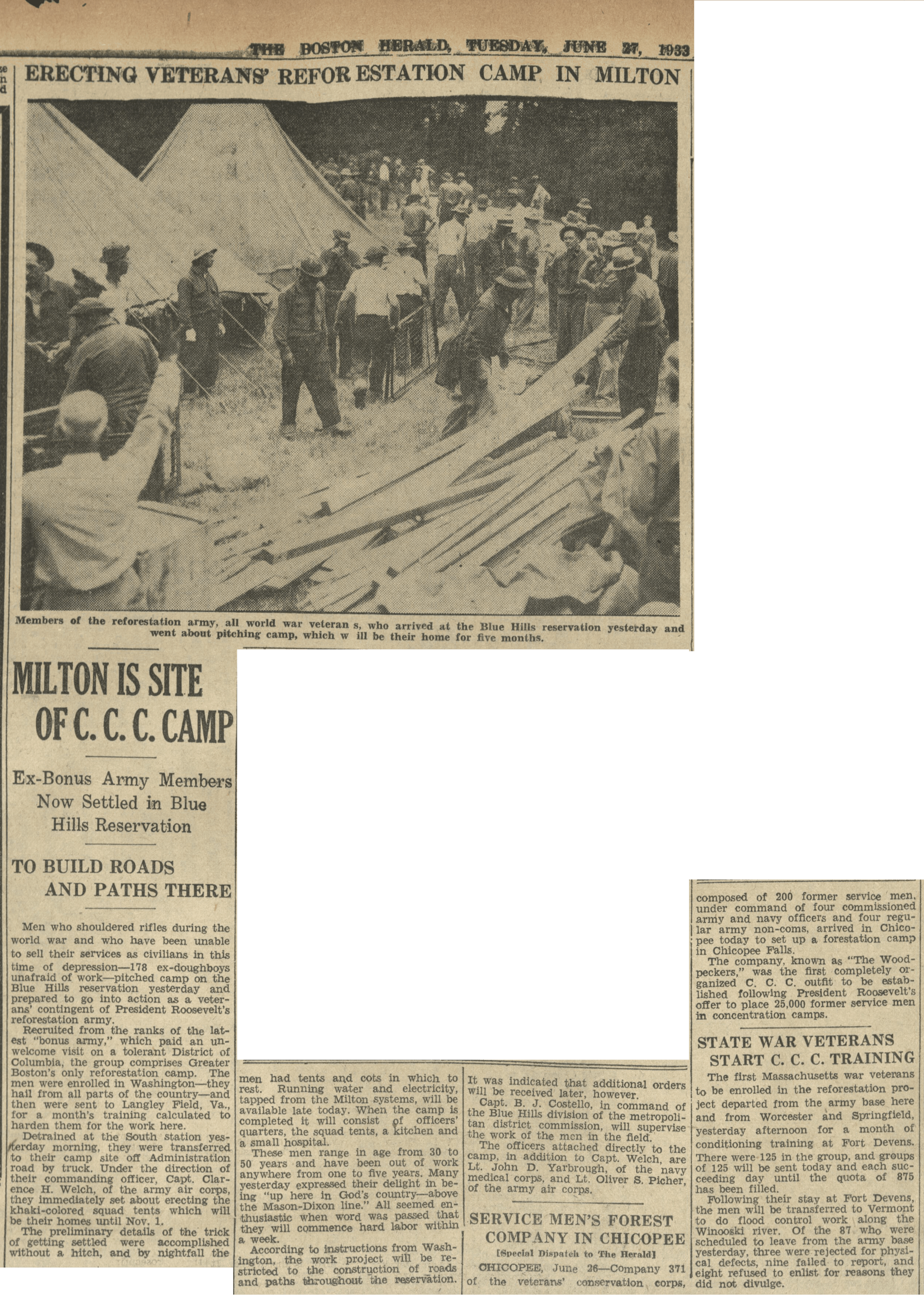
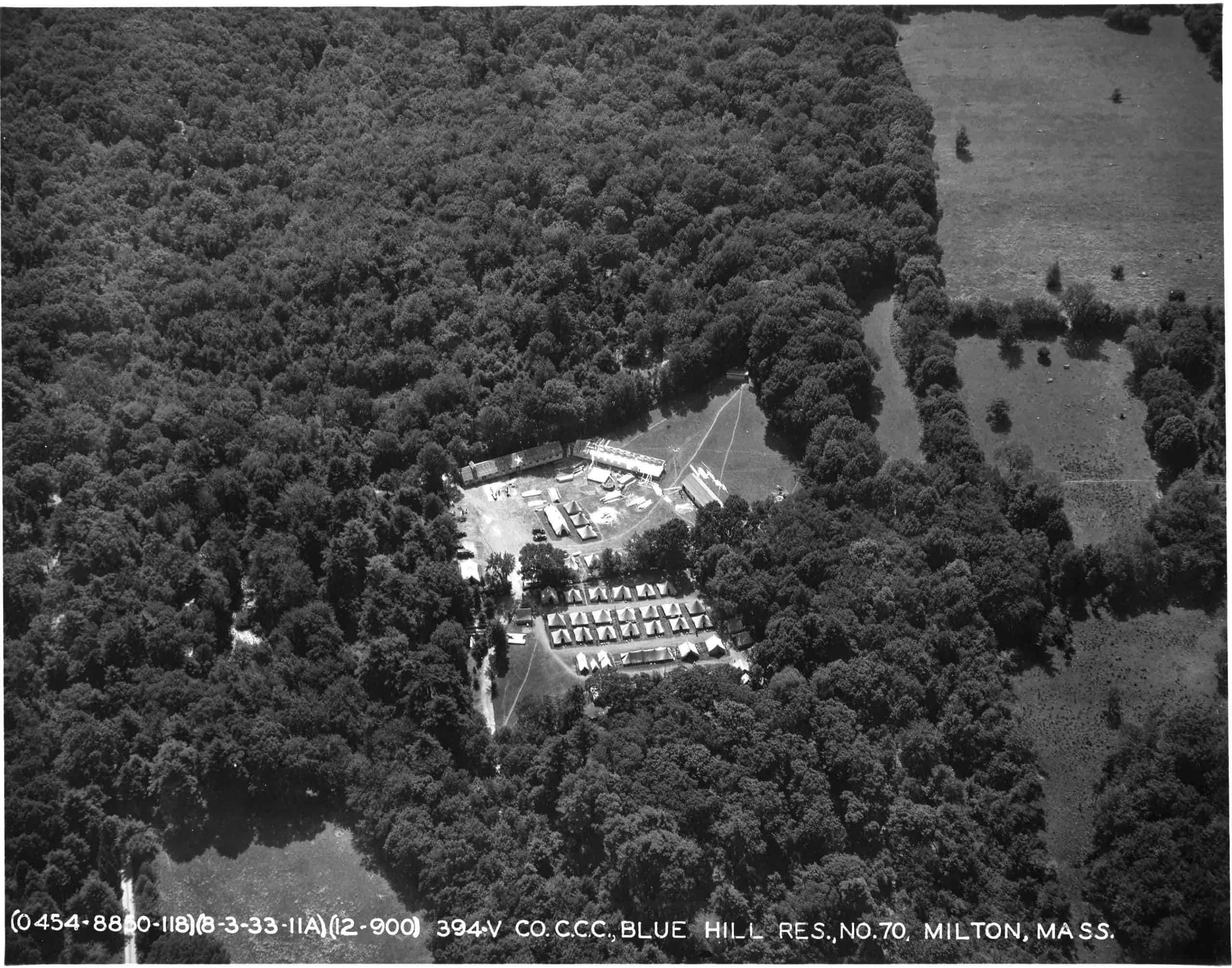
photo courtesy National Archives
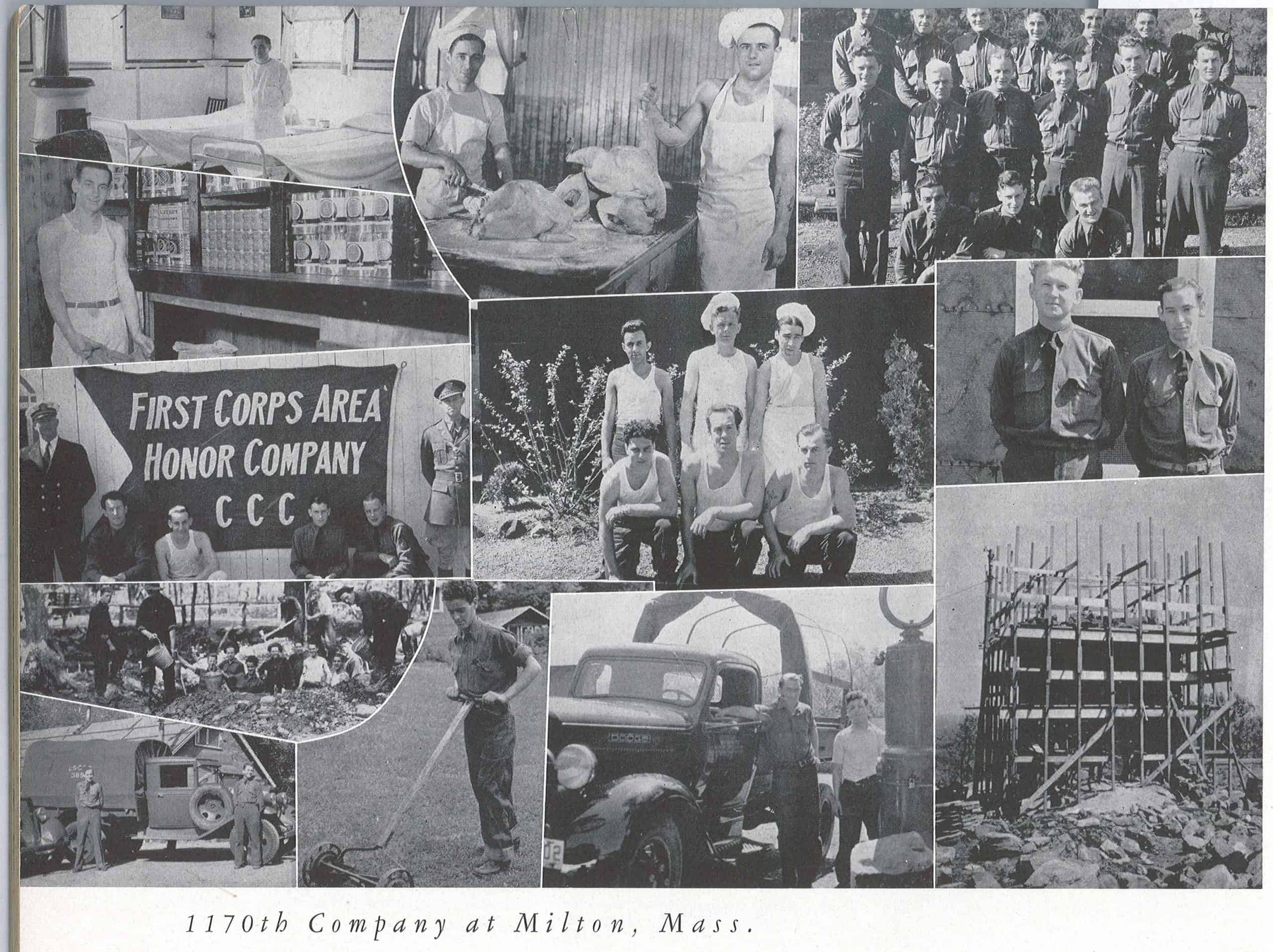

From 1933 to 1937 the CCC workers tackled an extraordinary range of projects. They planted 15,000 trees and shrubs, and were active in insect control, climbing up hundreds of trees to creosote gypsy moth eggs. They fought forest fires, drained swamps for mosquito control, cleared brush and fallen trees. CCC workers built two downhill ski runs and establishing over 25 miles of bridle paths and service roads. Workers created a recreation area at Pakomet Spring including a sizable picnic area with tables, benches and fireplaces. They worked hard… constructing stone observation towers at Chickatawbut Overlook and Great Blue Hill as well as stone steps up Buck Hill, Nahanton Hill, Great Blue Hill and other hills.
As you visit the DCR Blue Hills Reservation, be sure to marvel at the amazing contributions of the men of the CCC. Admire the view of the Boston skyline from the stone wall at Chickatawbut Overlook. Climb to the Eliot Observation tower atop Great Blue Hill and enjoy a panoramic vista of greater Boston and beyond. Offer thanks to the World War I veterans and the young men of the Blue Hills CCC Honor Camp. The program not only touched the lives of the enrollees and their families in the 1930’s but also left a lasting legacy of forest improvements and recreational resources across the Blue Hills Reservation… a testament in sweat and stone.

Who was missing from the Civilian Conservation Corps Camp in the Blue Hills?
The Civilian Conservation Corps employed young white and black men, yet the representation and experiences across racial lines were not equal. In 1935, the Civilian Conservation Corps ordered the segregation of CCC camps across the country. Massachusetts’ CCC camps remained integrated due in large part to low funding and a small African American population. A typical CCC camp in Massachusetts had, on average, two African Americans per enrollment period. Despite an amendment outlawing racial discrimination in the CCC, young African American enrollees faced significant discrimination and prejudice.
Women were prohibited from joining the CCC.
Journey to the Civilian Conservation Corps Camp in Milton
Visit the site of the former Civilian Conservation Corps Camp in Milton and journey through a slice of the 1930’s history of President Roosevelt’s Tree Army.
For a 4 ½-mile, flat loop to the former camp location, park at Shea Rink, 651 Willard St, Quincy. You’ll find the trailhead at trail marker 4234 on the north side of the parking lot. Follow the green dots between St. Moritz Ponds. After almost 2 miles, at marker 4091, take a right and then a left at 4083. Follow Sawcut Notch Path to 4042 and take a left to the former CCC Camp, where a sign near old concrete foundations highlights the history and significance of the camp and the men that worked there. Follow Sawcut Notch path back, taking a right at marker 4091 to follow the green dots back to Shea Rink.
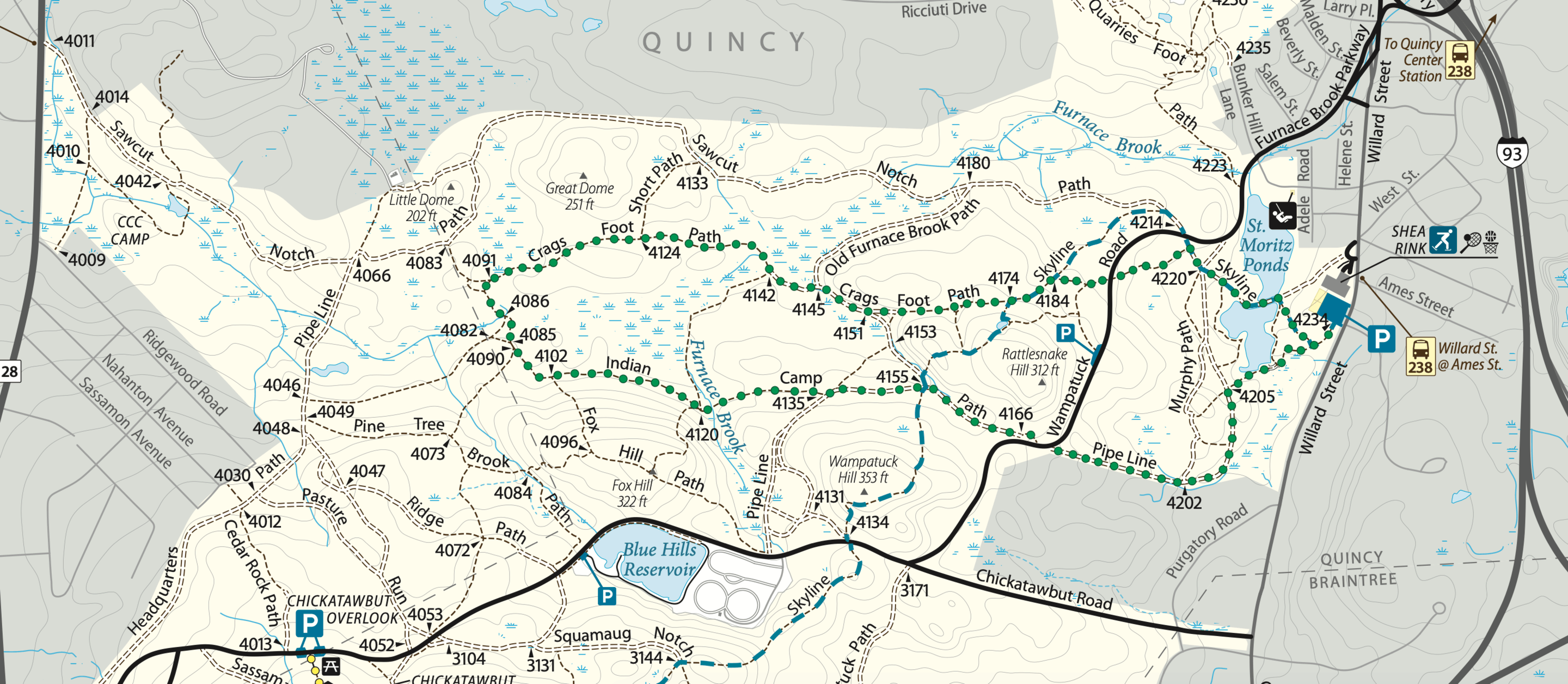

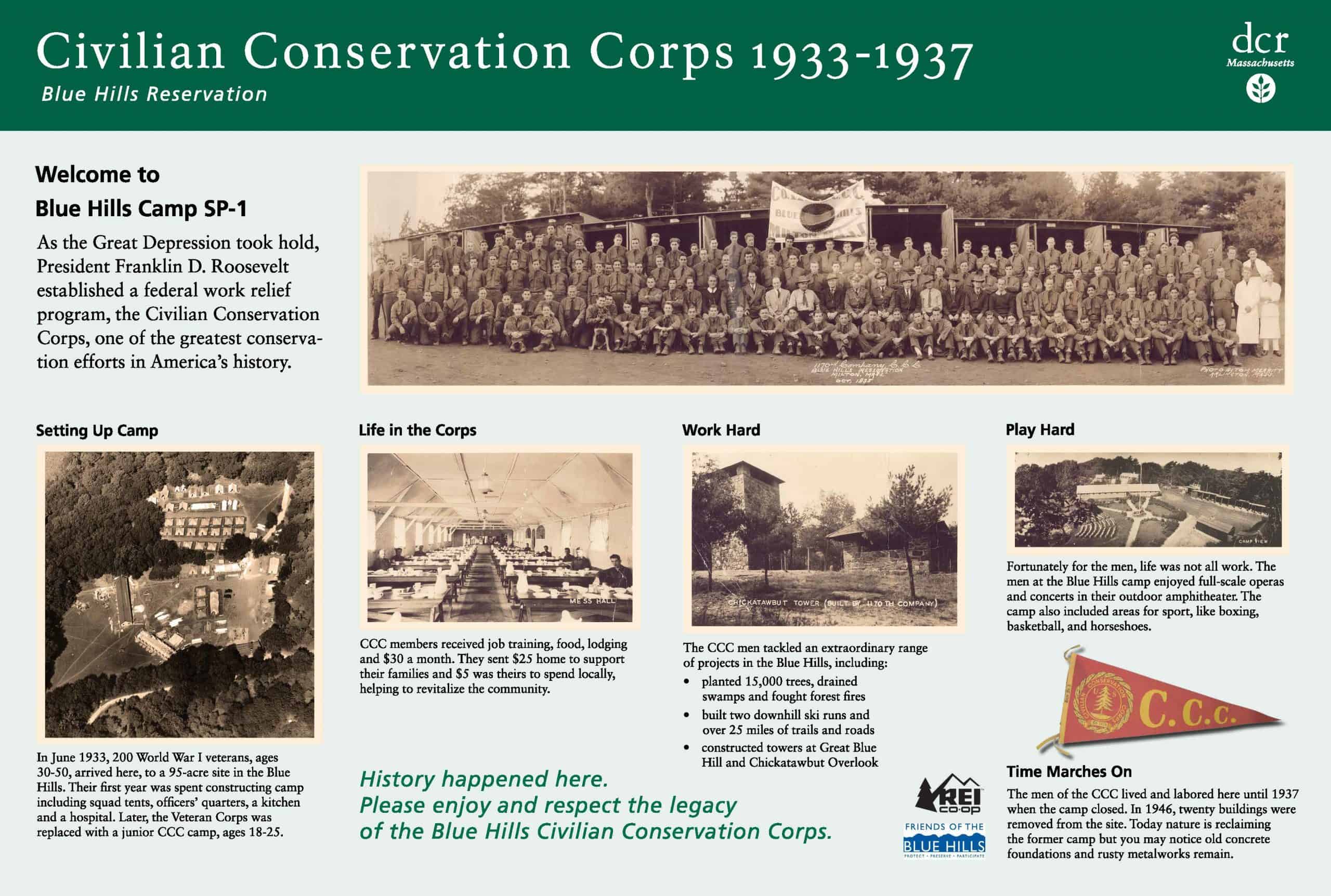






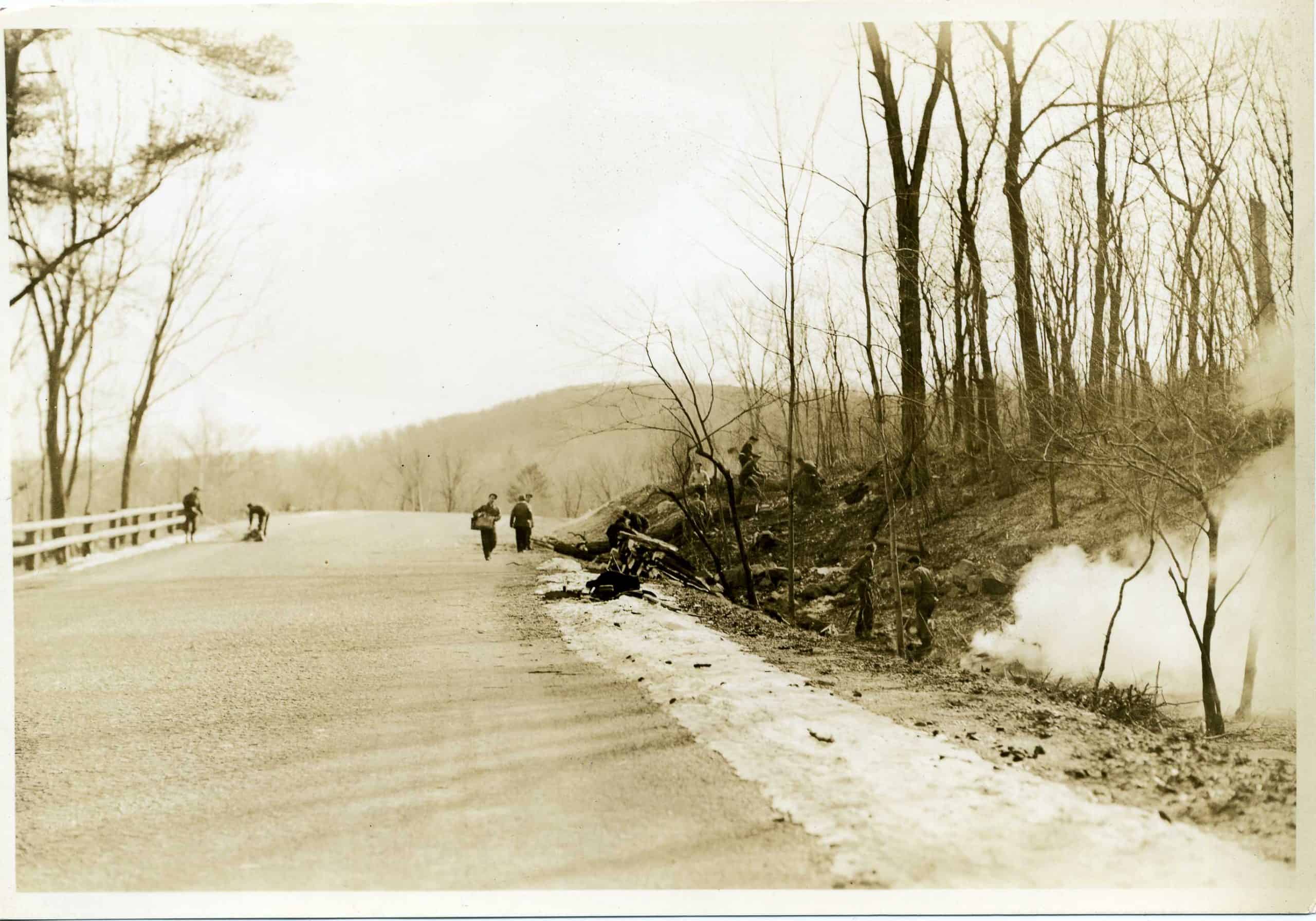
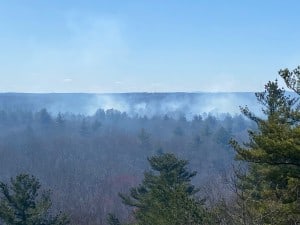

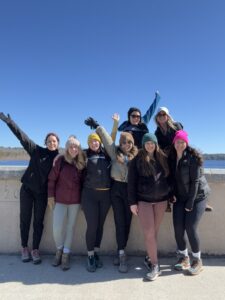


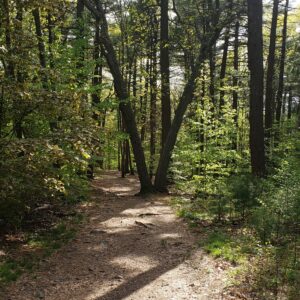
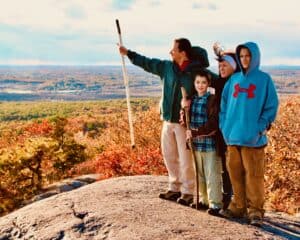



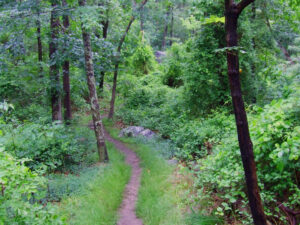
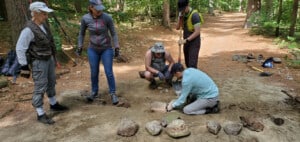

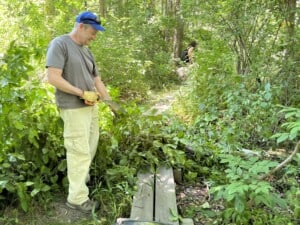

Visited the CCC camp site yesterday for the first time. Amazing. Loved the interpretive signage. Would never have known about the scale and scope of the camp without that. Much appreciation to everyone involved in the project for promoting this fascinating history!
Patrick
Thank you so much for your comment! We’re so glad that the signs helped you better enjoy – and appreciate the park!
Big thanks from DCR to Judy and REI for securing funding for initiating this project. Big thanks also to Maile for her research and educational contributions to the sign and Friend’s website. It’s been a pleasure working with you!
Bravo!
Happy Trails from Maggi